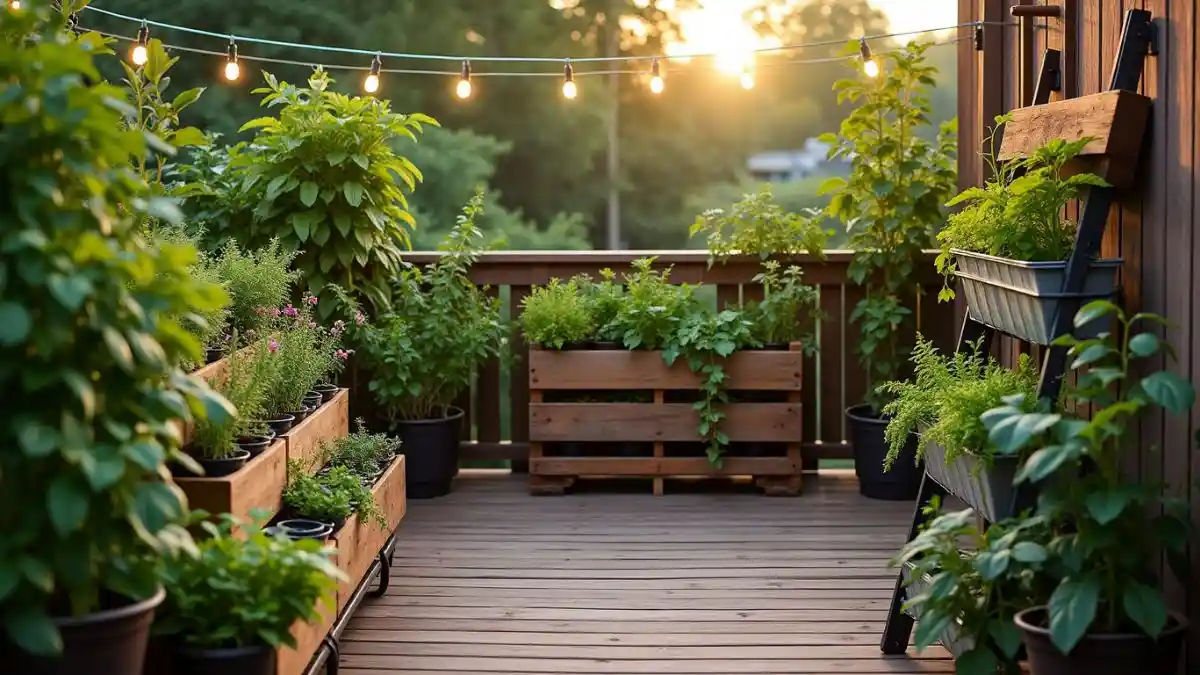Imagine stepping onto your deck and being greeted by a lush, vibrant garden right at your fingertips. Plant growing beds for deck make this dream a reality, even in the smallest urban spaces. If you’ve ever thought about growing your own food or adding greenery to your outdoor area but felt limited by space, you’re not alone.
Many people assume gardening requires a backyard, but with a little creativity, your deck can become a thriving garden. In this article, we’ll walk you through 7 genius ideas for plant growing beds on your deck, perfect for small spaces. Whether you have a sunny patio or a shaded nook, these tips will help you grow fresh, organic produce and beautiful flowers right outside your door.
Table of Contents
Why Choose Plant Growing Beds for Your Deck?
Before diving into the ideas, let’s explore why plant growing beds for deck are worth your time and effort.
- Maximizes Small Spaces: Perfect for decks, patios, or balconies with limited ground area.
- Better Soil Control: Raised beds allow you to customize soil quality for optimal plant growth.
- Improved Drainage: Elevated beds prevent waterlogging and root rot.
- Easier Access: No bending or kneeling required, making gardening more accessible.
- Aesthetic Appeal: Adds greenery and charm to your outdoor living space.
For example, a small deck can host multiple plant growing beds, yielding fresh herbs, veggies, and flowers. Plus, there’s nothing quite like the satisfaction of eating something you’ve grown yourself.
7 Genius Ideas for Plant Growing Beds on Your Deck
1. Vertical Garden Beds
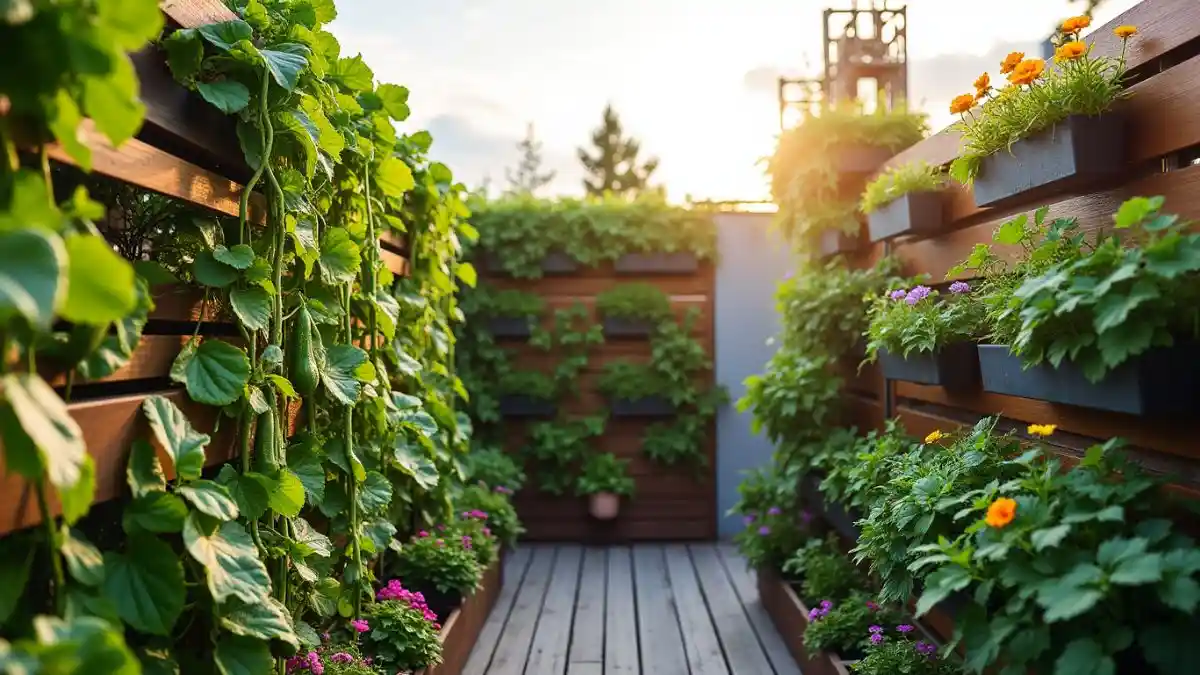
Vertical gardening is a game-changer for small spaces. By growing upward, you can maximize your deck’s potential without sacrificing floor space.
- How to Set Up: Use wall-mounted planters, trellises, or hanging pockets.
- Best Plants: Climbing plants like beans, peas, cucumbers, or trailing flowers like petunias.
- Pro Tip: Combine vertical beds with hanging planters for a layered, lush look.
Example: A trellis with climbing beans can double as a privacy screen, adding both function and beauty to your deck.
2. Tiered Raised Beds
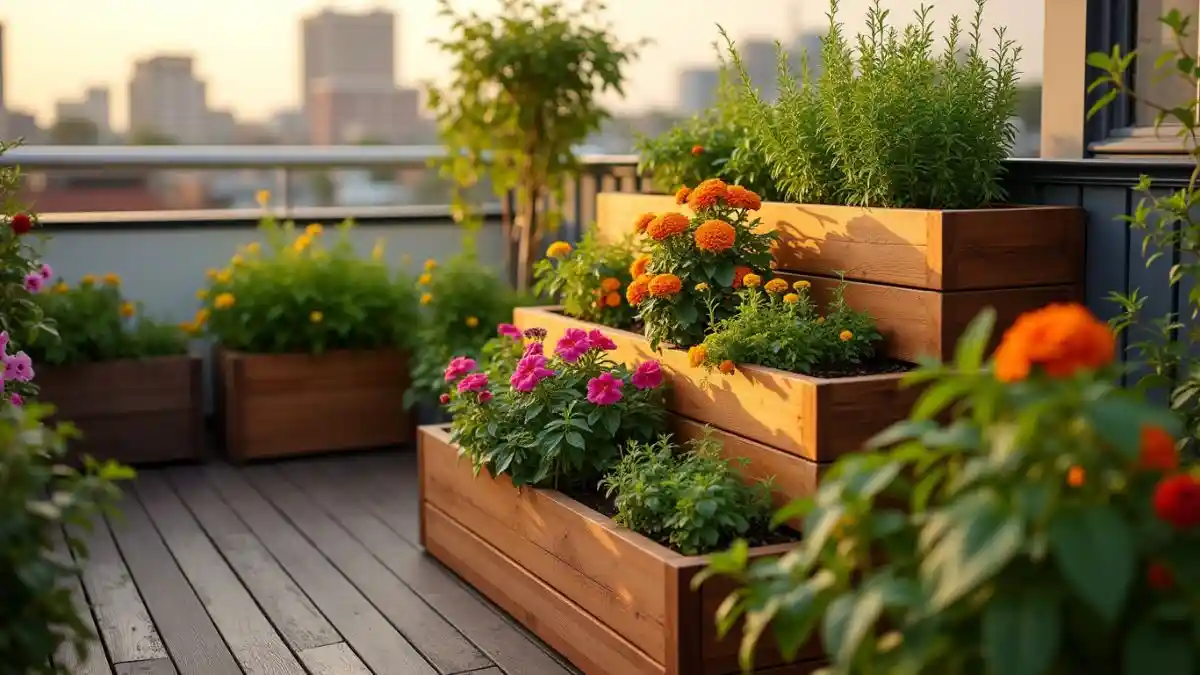
Tiered raised beds are perfect for adding depth and visual interest to your deck.
- How to Set Up: Use multi-level planters made of wood, metal, or plastic.
- Best Plants: Herbs in the top tier, flowers in the middle, and veggies like cherry tomatoes at the bottom.
- Pro Tip: Choose lightweight materials if your deck has weight restrictions.
Example: A 3-tiered bed can host basil, marigolds, and cherry tomatoes in one compact structure.
3. Rolling Planter Boxes
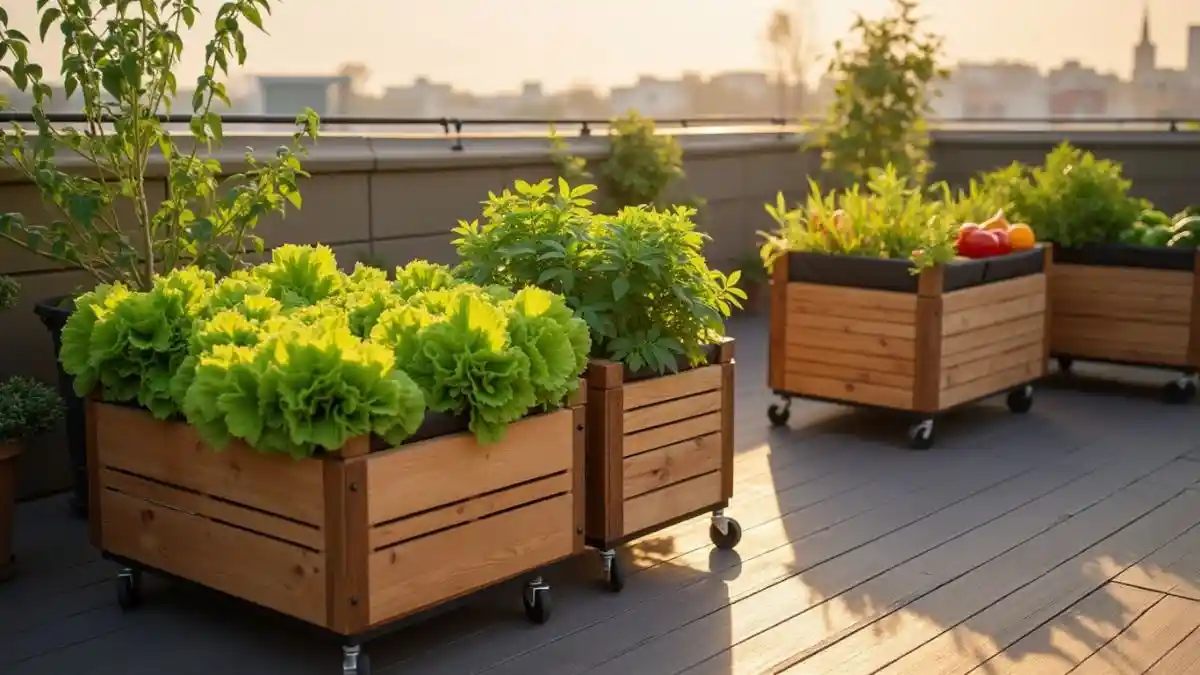
Rolling planters offer flexibility, allowing you to move your garden as needed.
- How to Set Up: Add wheels to your planters or purchase pre-made rolling boxes.
- Best Plants: Herbs, lettuce, or compact veggies like peppers.
- Pro Tip: Use locking wheels to keep planters stable during windy conditions.
Example: A rolling planter box can be moved to catch morning sun and afternoon shade, ensuring your plants thrive.
4. Hanging Garden Beds
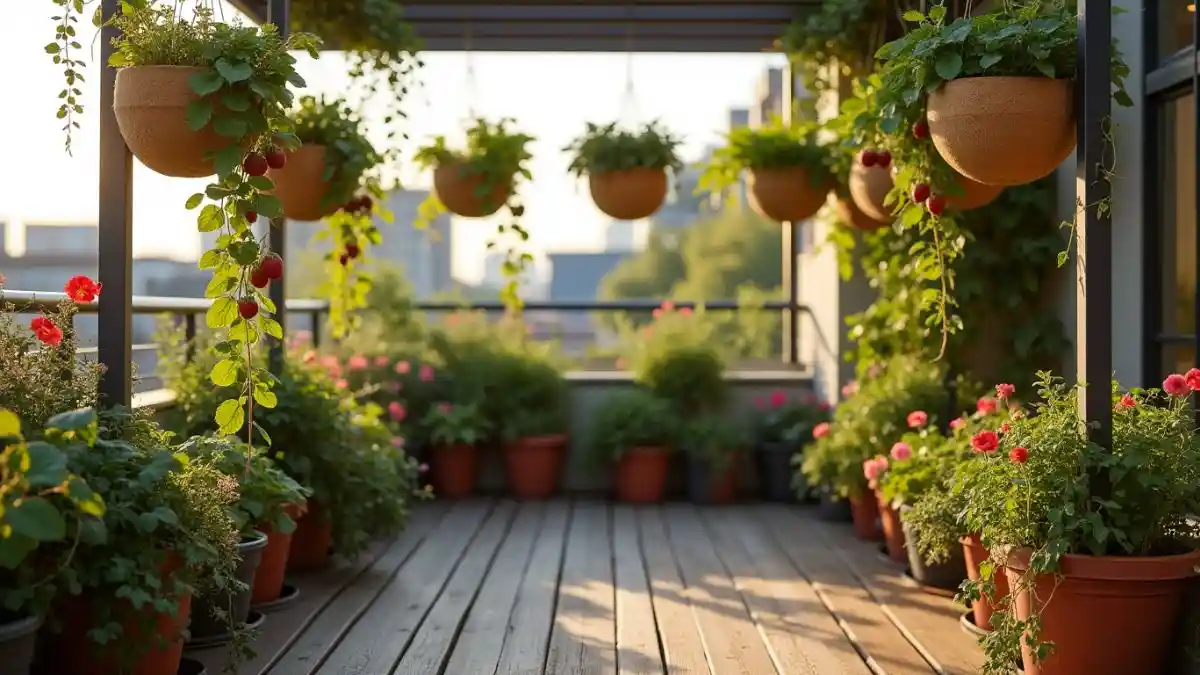
Hanging planters are a great way to free up floor space while adding a decorative touch.
- How to Set Up: Suspend planters from railings, pergolas, or overhead hooks.
- Best Plants: Trailing plants like strawberries, ivy, or petunias.
- Pro Tip: Use lightweight, durable materials like coco coir or plastic.
Example: Hanging beds with cascading flowers create a stunning visual effect, turning your deck into a green oasis.
5. Modular Garden Systems
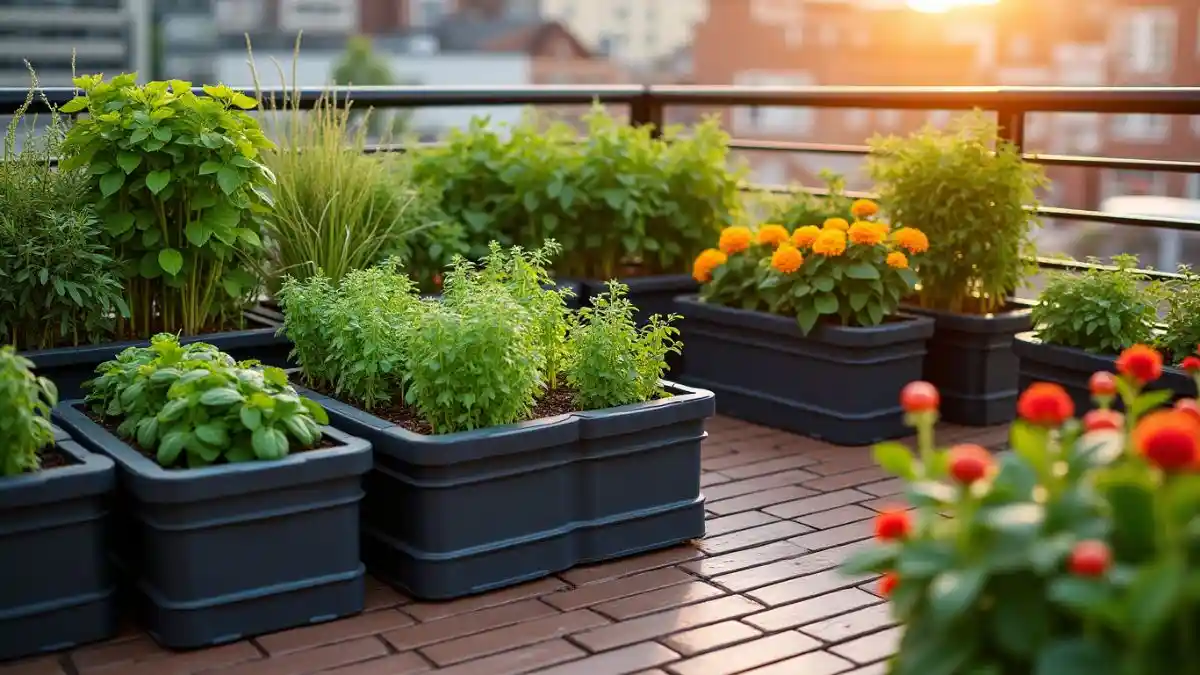
Modular systems allow you to customize your garden layout to fit your deck’s unique shape and size.
- How to Set Up: Use interlocking planters or stackable boxes.
- Best Plants: Mix and match herbs, flowers, and veggies for a diverse garden.
- Pro Tip: Choose systems with built-in drainage for convenience.
Example: A modular system can be configured to fit a corner or along a railing, making it a versatile option for small decks.
6. Corner Garden Beds
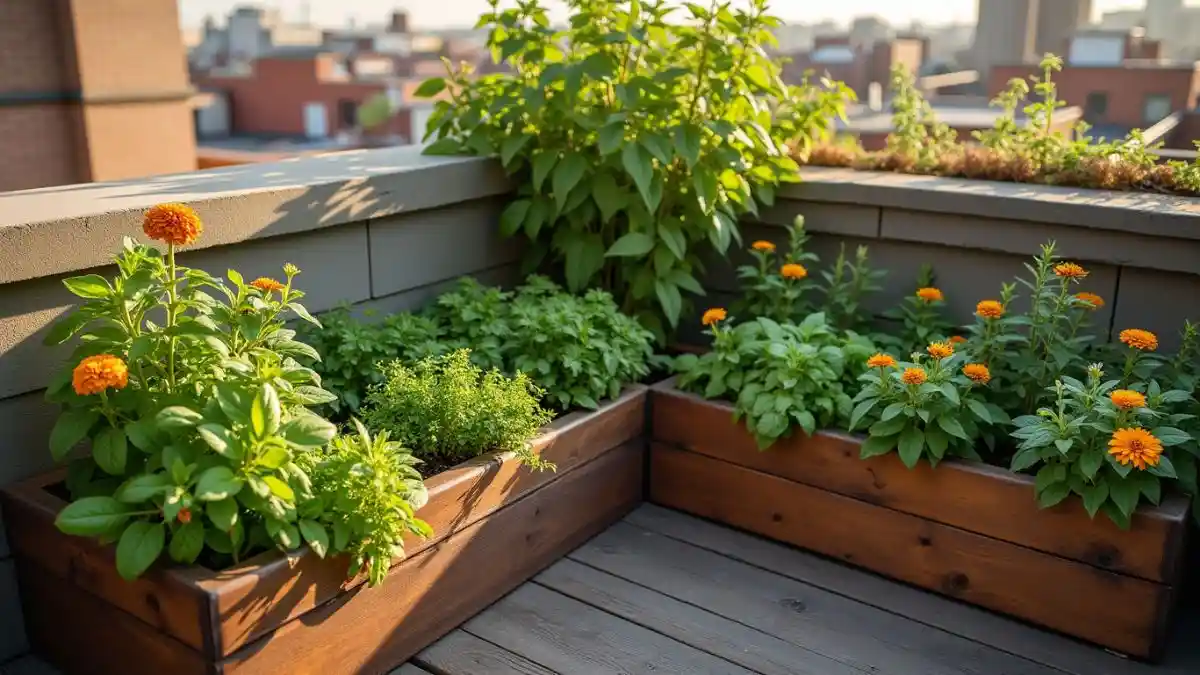
Don’t let awkward corners go to waste—turn them into productive garden spaces.
- How to Set Up: Use triangular or L-shaped planters designed for corners.
- Best Plants: Herbs, flowers, or compact veggies like lettuce.
- Pro Tip: Add a small trellis for climbing plants to maximize vertical space.
Example: A corner bed with basil, thyme, and marigolds creates a cozy, functional nook on your deck.
7. Self-Watering Planters
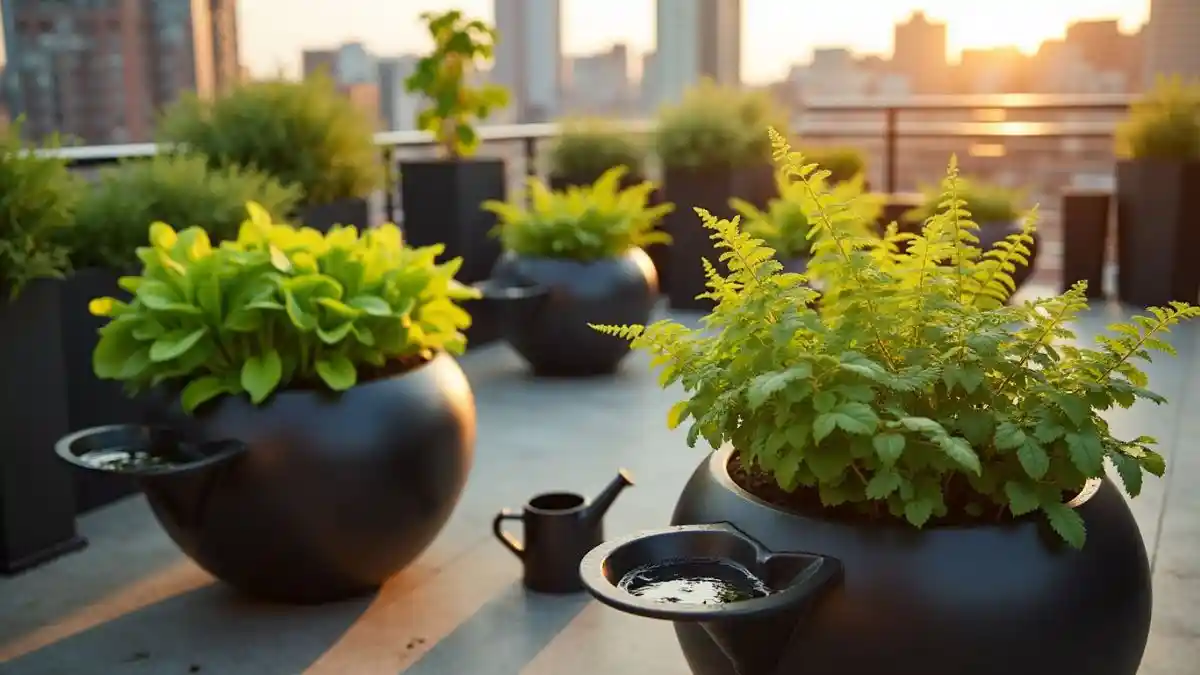
Self-watering planters are ideal for busy gardeners or those new to gardening.
- How to Set Up: Choose planters with built-in water reservoirs.
- Best Plants: Moisture-loving plants like lettuce, mint, or ferns.
- Pro Tip: Refill the reservoir weekly to ensure consistent moisture.
Example: A self-watering planter with herbs ensures fresh flavors all season long, even if you forget to water.
How to Choose the Right Plant Growing Beds for Your Deck
Choosing the right plant growing beds for your deck depends on several factors:
- Assess Your Space: Measure your deck and note sunlight exposure. Most plants need 4-6 hours of sunlight daily.
- Consider Weight Limits: Ensure your deck can support the weight of planters, soil, and plants. Lightweight materials like cedar or plastic are ideal.
- Choose Materials: Opt for durable, weather-resistant materials like cedar, metal, or plastic.
- Prioritize Drainage: Ensure planters have adequate drainage holes to prevent waterlogging.
Example: A lightweight cedar bed is perfect for a small deck with limited weight capacity, while a metal planter adds a modern touch.
Tips for Maintaining Plant Growing Beds on Your Deck
- Water Regularly: Check soil moisture daily, especially in hot weather. Early morning is the optimal time to water.
- Prune Plants: Remove dead leaves and stems to encourage growth and improve air circulation.
- Rotate Planters: Ensure even sunlight exposure by rotating pots occasionally.
- Use Mulch: Add a layer of mulch to retain soil moisture and suppress weeds.
Pro Tip: Use a moisture meter to check soil hydration levels and avoid overwatering.
Best Plants for Deck Growing Beds
- Herbs: Basil, parsley, cilantro, and mint thrive in small spaces and are perfect for cooking.
- Leafy Greens: Lettuce, spinach, and kale are easy to grow and harvest.
- Compact Veggies: Cherry tomatoes, peppers, and dwarf cucumbers are ideal for containers.
- Flowers: Marigolds, petunias, and nasturtiums add color and attract pollinators.
Example: A mix of herbs and flowers creates a functional and beautiful deck garden.
DIY vs. Store-Bought Plant Growing Beds
- DIY Beds: Customizable and cost-effective but require time and tools.
- Store-Bought Beds: Convenient and often designed for small spaces but can be more expensive.
Example: A DIY cedar bed can be tailored to fit your deck’s dimensions, while a store-bought modular system offers quick setup.
Seasonal Care for Deck Plant Growing Beds
- Spring: Start cool-season crops like lettuce and spinach.
- Summer: Grow heat-loving plants like tomatoes and peppers.
- Fall: Plant quick-growing veggies like radishes and greens.
- Winter: Use season extenders like cloches or cold frames for cold-hardy plants.
Example: A winter planter with kale and Swiss chard provides fresh greens even in colder months.
Frequently Asked Questions (FAQ)
What are plant growing beds for deck?
Plant growing beds for deck are elevated or containerized gardening solutions designed for small outdoor spaces like decks or patios.
Can I grow vegetables in plant growing beds on my deck?
Yes! Vegetables like tomatoes, peppers, and herbs thrive in deck planters with proper sunlight and care.
How do I choose the right size for my deck planters?
Measure your deck space and consider weight limits. Start with smaller beds and expand as needed.
What materials are best for deck plant growing beds?
Cedar, plastic, and metal are popular choices for their durability and lightweight properties.
How often should I water plants in deck beds?
Water when the top inch of soil feels dry. Self-watering planters can reduce the frequency.
Can I utilize plant growing beds on a shaded deck?
Yes, but choose shade-tolerant plants like lettuce, spinach, or ferns.
How do I prevent pests in my deck garden?
Use organic solutions like neem oil or insecticidal soap, and inspect plants regularly.
Are self-watering planters worth it?
Yes, they’re ideal for busy gardeners or those new to gardening, as they reduce watering frequency.
Can I move plant growing beds around my deck?
Yes, rolling planters or lightweight beds make it easy to rearrange your deck layout.
What are the best plants for deck growing beds?
Herbs, leafy greens, and compact veggies like cherry tomatoes are great choices for small spaces.
Conclusion: Transform Your Deck with Plant Growing Beds
Creating a plant growing bed for your deck is easier than you think. By following these 7 genius ideas, you can transform your deck into a productive, green oasis. Whether you’re growing herbs for your kitchen or flowers for your table, the rewards are endless.
Call-to-Action: Ready to get started? Pick up a few planters, some potting mix, and your favorite seeds, and begin your deck gardening journey today. Your fresh, homegrown produce and beautiful flowers are just a few steps away!


